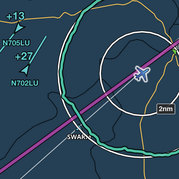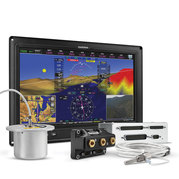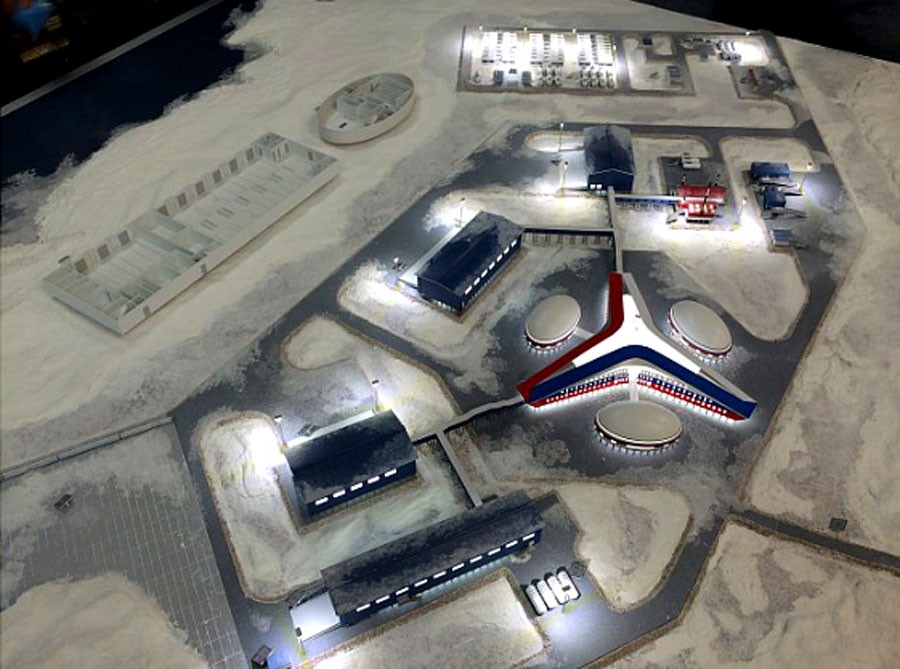Fra min korrespondent på Kolbotn har jeg fått denne. Alle tre ulykkene har vært omtalt på bloggen min tidligere. Det spesielle her er imidlertid forholdene og kommandolinjene i luftforsvaret i nord. (Red.)
The Tu-22M is a supersonic
long-range strategic and maritime strike aircraft. Photo: CNN
Three Russian Air Force
jets lost on training flights in one week
39829
January 28, 2019
Text by
Tatiana Britskaya
On January 22nd, A Tupolev Tu-22M
“Backfire” jet crashed in the village of Vysoky in the Murmansk region,
killing the ship’s commander, Alexei Guriev, and his assistant, Konstantin
Mazunin, instantly. Navigator Victor Greif died in intensive care from extensive
burns and the fourth crew member, navigator Maksim Rylkov, is in the hospital
in serious condition with multiple fractures and internal injuries. He was
first taken to the intensive care unit of the district hospital and then
transported to Moscow.
Sjekk video av landingen her: https://tinyurl.com/ybk4oc5l
The unarmed bomber was returning to base
after a training flight with two other Tu-22Ms. Moving at about 300km/h, they
miscalculated their approach, hitting the ground and falling into the strip
between the runways and bursting into flames. The pilot and copilot were
seated in the forward compartment and the navigators were aft. These supersonic
bombers can be equipped with ultra-fast long-range missiles with both nuclear
and conventional warheads. On this flight, they were carrying weighted models
instead of live missiles but the fuel tanks were full. The other two planes
landed safely. Before the crash, there were only 40 Tu-22Ms in the Russian
arsenal.
Now the issue has been passed on to an
investigation commission in Vysoky. They are waiting, according to our source,
to hear from Sergey Shoygu, the Minister of Defence. Tu-22M flights are
suspended until the completion of the investigation.
There are three major questions about what
caused the crash. Obviously, the weather is the first to consider. There
has been a lot of icy rain in the Murmansk region in January. It is usually
followed by snow flurries. The sleet storms are brief, appearing and
disappearing quickly. But according to eyewitnesses, just such a downpour
accompanied by strong gusts of wind and almost zero visibility struck the
Olenegorsk region between one and two o’clock on Tuesday. The crash, according
to official data, occurred at 1:40. Cloud cover was at only about 70 or 80
meters, a critical mark for aircraft of this class.
The second possibility is pilot error.
Capable of being in the air for up to 17 hours, “The killer of aircraft
carriers” is a hulk with a four man crew and it is very difficult to land such
an aircraft in extremely low cloud cover. The crew was experienced, and it was
not the first time that they had flown in such weather, which is very common in
the polar region. In Vysoky, where everyone knows each other, the locals
point out that they do not give such planes to children. They remember the
flyers as lieutenants and say it is too easy to write of the mistake as being
the fault of the dead. But it is also true that even aces sometimes make
mistakes.
The Air Force is not civil aviation where
the captain has the right to abort a landing. On long-range aviation
exercises, such an order must be given by the flight director on the ground or
an assistant who is directly on the strip. Was an abort order given? Probably
not. The official military report reads: “The landing took place without visual
control by flight management.” However, reliable information about weather
conditions is something the crew receives from ground control and ground
control makes the decisions on the possibility of landing in extremely
dangerous conditions.
And yes, there was enough fuel for a second
attempt which probably would have saved their lives. The sleet ended after a
few minutes and visibility was fully restored. It always seems as though
moments decide everything in the north.
The third version is the technical
conditions on board the aircraft. The plane was built in 1986 and had been
overhauled in 2012 and some modernization had been planned in the near future.
But the model has been reliable and the only similar accident in was when a
TU-22M3 crashed near Novgorod 15 years ago. That crash had been due to a
technical malfunction and the entire crew was killed. That had also been during
training maneuvers.
The current catastrophe monstrously
resembles an episode from Tom Clancy’s dystopian World War III drama “Red Storm
Rising”. While away on a bombing mission in Norway, the Americans bomb
the runway at Olenegorsk, so that our people cannot land and are forced to
crash. Clancy is long gone but the plot of Red Storm, written in 1986,
the same year the crashed airplane was built at Kazan Aviation Plant by
the way, is similar except that no one had bombed the landing strip. On the
contrary, the Olenya long-range aviation base is considered to have the
best conditions in the country. Many bombers have flown to Syria from there and
have always returned. The crews of long-range aviation are specialists and only
those with the highest qualifications are accepted. These planes, like with
aircraft carriers, are expensive and prestigious pleasures. Only Russia and the
United States can afford such specialists and such machines for now.
And despite all of the saber-rattling
between the two powers these days, instead of producing new and modern
machines, Russia only loses the old ones.
There is only one aircraft carrier in Russia
and there is nowhere to repair it after the flooding of the Roslyakovo dock.
The carrier would be better off with the help of strategic air support and so
the loss of four experienced and articulate aviators is not only a tragedy but
also a blow to combat capability.
And this crash was the second such blow this
week. On January 18, two Su-34s accidentally collided while flying over the
Strait of Tartary in the Sea of Japan. Bad weather was also a factor there
but pilot error is blamed in official news of the event. The news agencies say that the flight leader
lost track of his subordinate in the clouds while attempting a risky maneuver.
Two planes were involved and the two pilots of one of the jets ejected into the
sea but both were found in good condition and the second plane managed to land
safely despite a damaged engine. But multiple sources in the fleet inform
that there were three aircraft, two collided and fell into the icy sea and the
third landed with a bad engine. 4 pilots ejected but only one was pulled out
alive. The helicopters that were looking for them were not equipped with
winches to evacuate a person from the water. And the emergency radio beacons
giving the coordinates apparently did not work.
The Russian military provides their staff
with instructions, procedures and with the rescue equipment needed for almost
any abnormal situation. But instructions and procedures are not always followed
and the equipment sometimes fails. And in this case, a heavyweight supersonic
bomber breaks in two after slamming into the ground while trying to land in an
impenetrable blizzard and helicopters and ships spend hours looking for but
never finding live pilots equipped with an emergency coordinate system 30 km
from the coast. And none of these deaths came in combat situations. These were
deadly mistakes during training exercises.
We bear the most serious losses in
peacetime. In 2000, a warhead on the nuclear submarine “Kursk” exploded,
sinking the ship in the Barents sea and killing all 118 crew members during a
training exercise. Three years later, while being hauled away for disposal, the
K-159 nuclear submarine sank with 9 sailors and 800 kilos of spent nuclear fuel
on board. The Kola drilling platform went to the bottom in horrible weather
while being pulled though the Sea of Okhotsk. 53 people died and a director and a
chief engineer got sentenced for negligence for even attempting the move in
such bad conditions. And the great fighter pilot Timur Apakidze crashed at an
air show due to technical problems. He had not ejected until he had taken his crippled
plane away from the populated area.
We are ready to threaten the whole world. We
sanctify rockets and practice shooting them rather than budgeting for brand new
hospitals. And our pilots and submariners are dying, not even in combat but in
training maneuvers. And no one ever seems to be responsible for this.
This
story is originally posted by Novaya
Gazeta and translated and re-published as part of Eyes on
Barents, a collaborative partnership between news organizations and
bloggers in the Barents region




















